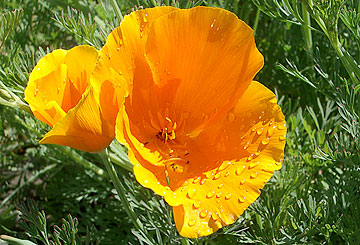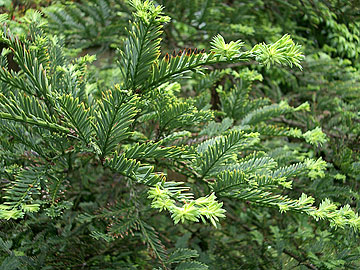Salinity Management Guide

Eschscholzia californica (California poppy) is a native of California, as its name indicates.
Going native
Native species might well be considered for use, as some of them may be well adapted to the local climate. Indeed, many cities are now requiring that landscapes incorporate native species as appropriate.
Information helpful for selecting native plants is available in books or via the Internet. Several useful books are cited in the closing page of this module. Out on the World Wide Web, a good place to start is the home page of the Rancho Santa Ana Botanic Garden (www.rsabg.org) or the home page of the San Diego chapter of the California Native Plant Society (www.cnpssd.org). Both sites contain useful information plus numerous links to many other helpful sites.

Sequoia sempervirens (coast redwood), another California native, responds well to the frequent watering regimen common to many urban landscapes.
Bear in mind, however, that native species do not necessarily perform better than non-native ones. Urban landscapes typically have been altered, sometimes considerably, from their original, long-ago, natural states. For example, the soil in urban landscapes has usually been modified and the microclimate is sometimes greatly altered by pavement and buildings. Air pollution may also be a factor. Non-native species adapted to such environmental conditions may do as well as or better than native species.
The website of the California Invasive Plant Council (www.cal-ipc.org) provides a variety of information about plants that adversely affect California landscapes. The sub-page titled Don't Plant a Pest (www.cal-ipc.org/landscaping/) provides a handy map for looking up invasive species for any region in the state and suggests native species that are desirable alternatives to the invasive ones. Also useful is Encycloweedia, a site maintained by the California Department of Food and Agriculture, at http://www.cdfa.ca.gov/phpps/ipc/encycloweedia/encycloweedia_hp.htm. It provides information about identifying and managing plants defined as noxious weeds by California law.
| « Previous page | Next page » |